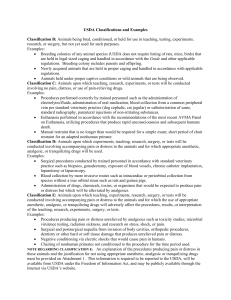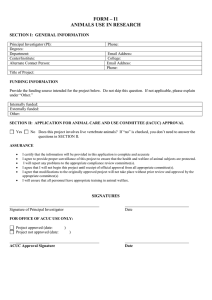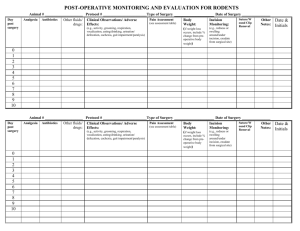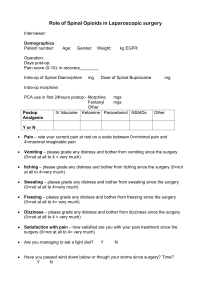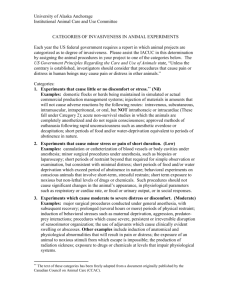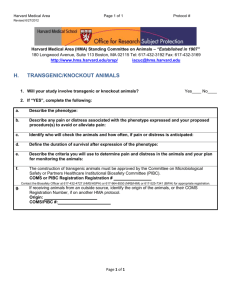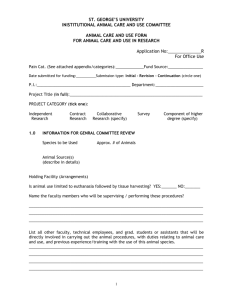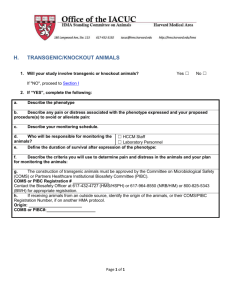KUMC Guide to USDA Pain Categories
advertisement
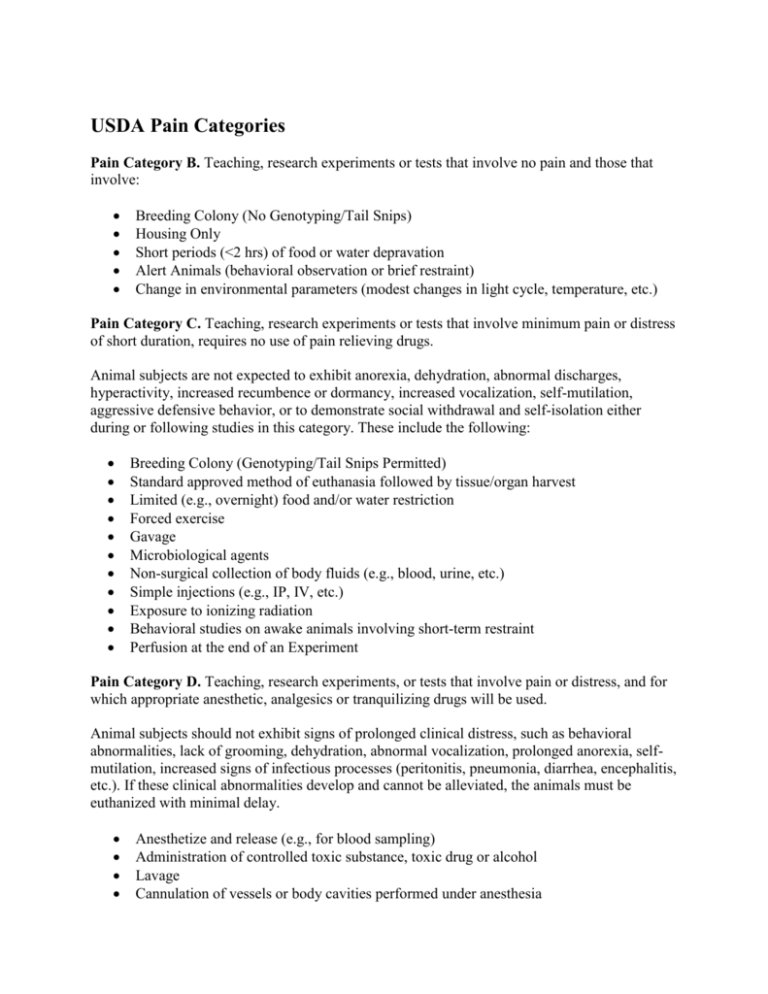
USDA Pain Categories Pain Category B. Teaching, research experiments or tests that involve no pain and those that involve: Breeding Colony (No Genotyping/Tail Snips) Housing Only Short periods (<2 hrs) of food or water depravation Alert Animals (behavioral observation or brief restraint) Change in environmental parameters (modest changes in light cycle, temperature, etc.) Pain Category C. Teaching, research experiments or tests that involve minimum pain or distress of short duration, requires no use of pain relieving drugs. Animal subjects are not expected to exhibit anorexia, dehydration, abnormal discharges, hyperactivity, increased recumbence or dormancy, increased vocalization, self-mutilation, aggressive defensive behavior, or to demonstrate social withdrawal and self-isolation either during or following studies in this category. These include the following: Breeding Colony (Genotyping/Tail Snips Permitted) Standard approved method of euthanasia followed by tissue/organ harvest Limited (e.g., overnight) food and/or water restriction Forced exercise Gavage Microbiological agents Non-surgical collection of body fluids (e.g., blood, urine, etc.) Simple injections (e.g., IP, IV, etc.) Exposure to ionizing radiation Behavioral studies on awake animals involving short-term restraint Perfusion at the end of an Experiment Pain Category D. Teaching, research experiments, or tests that involve pain or distress, and for which appropriate anesthetic, analgesics or tranquilizing drugs will be used. Animal subjects should not exhibit signs of prolonged clinical distress, such as behavioral abnormalities, lack of grooming, dehydration, abnormal vocalization, prolonged anorexia, selfmutilation, increased signs of infectious processes (peritonitis, pneumonia, diarrhea, encephalitis, etc.). If these clinical abnormalities develop and cannot be alleviated, the animals must be euthanized with minimal delay. Anesthetize and release (e.g., for blood sampling) Administration of controlled toxic substance, toxic drug or alcohol Lavage Cannulation of vessels or body cavities performed under anesthesia Survival surgery (MAJOR or MINOR) Multiple survival surgery (MAJOR or MINOR) Non-survival surgery (euthanized prior to recovering from anesthesia) Transgenic mouse production Transgenic mouse maintenance including tail clip (mice over 21 days of age) Pain Category E. Teaching, research experiments, surgery, or tests that involve pain or distress, and for which appropriate anesthetic, analgesics, or tranquilizing drugs are not used due to adverse effects on the procedures, results, or interpretation of data. Lethal dosage studies Pain study or other noxious stimuli from which there is no escape Exposure to noxious stimuli or agents whose effects are unknown Induction of aggressive behavior leading to self-mutilation or fighting Induction of disease where infected animals are permitted to succumb rather than receive therapeutic intervention Functional deficit (e.g. paralysis) Unusual or prolonged restraint for more than one hour Transgenic/Mutants that may have functional deficits Tumor induction or implantation Deviations from KUMC’s approved methods of Euthanasia
